The experience I’ve had with co-running a project space and admiring other similar initiatives from afar, either geographically distant or in terms of my inhabited time, has made me believe that while high-production-value exhibitions in museums and art centres can be amazing experiences, the most genuine and exhilarating encounters often take place in project rooms and artist-run spaces. A recent offer from A Shade Colder gave me an excuse to interview people from self-initiated project spaces and I contacted Kaspars Groševs from 427 Gallery in Riga, Edgaras Gerasimovičius from Swallow in Vilnius, and Sunna Ástþórsdóttir from The Living Art Museum in Reykjavík. What follows are selected thoughts on running a project space now in these uncertain times.
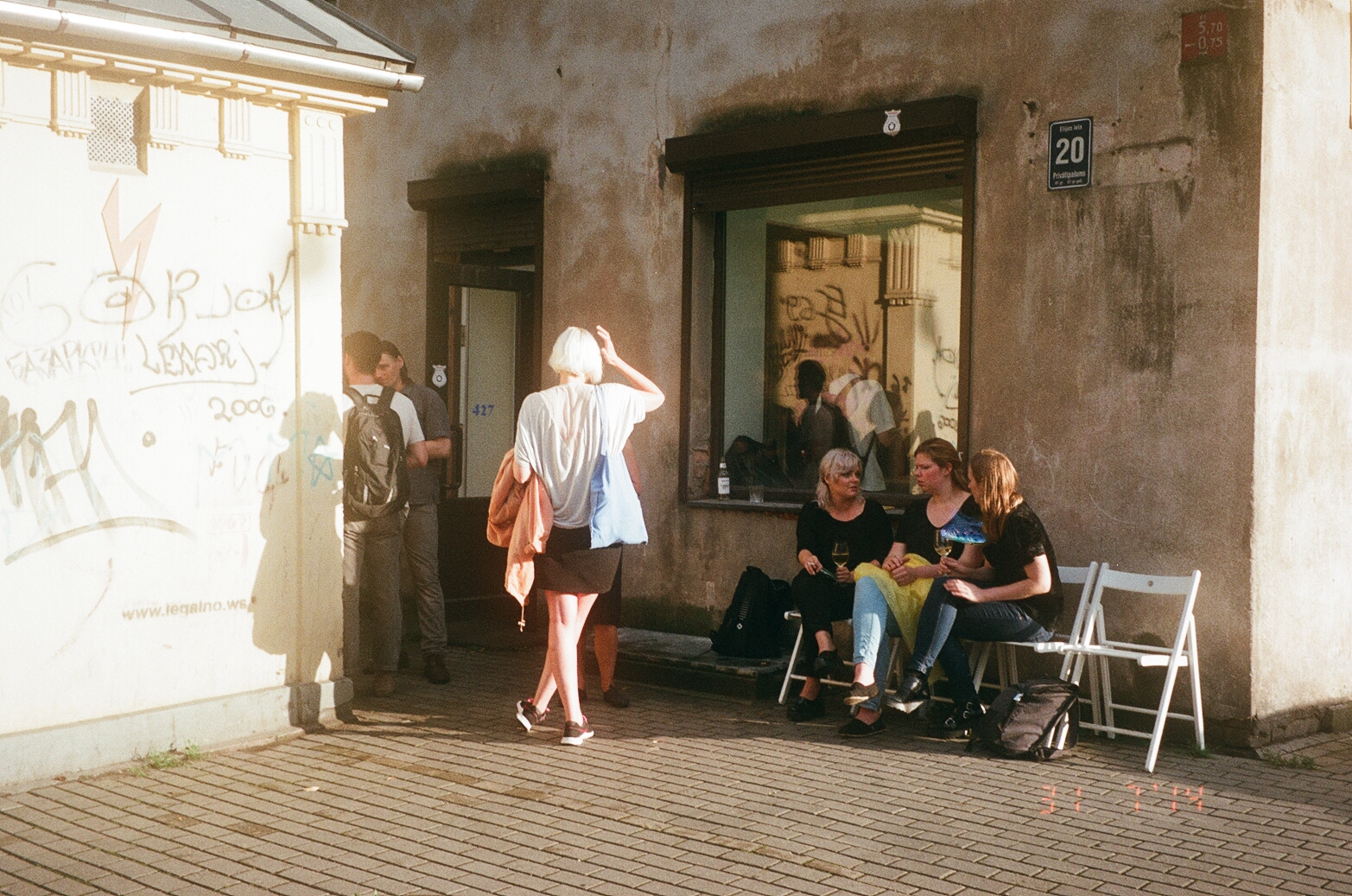
Photo from the first 427 location at Ellijas street 20, Riga, 2014. Photo: Elīna Vītola
Reacting to a need or surfing the chaos
427 Gallery was founded in 2014 by the artists Kaspars Groševs and Ieva Kraule-Kūna. Since 2016 the gallery has been run by Groševs and Marta Trektere. 427 sees itself as a gathering place for a portion of the Riga contemporary art scene, providing an exhibition space for artists and practices that are poorly represented in the state institutions and commercial galleries.
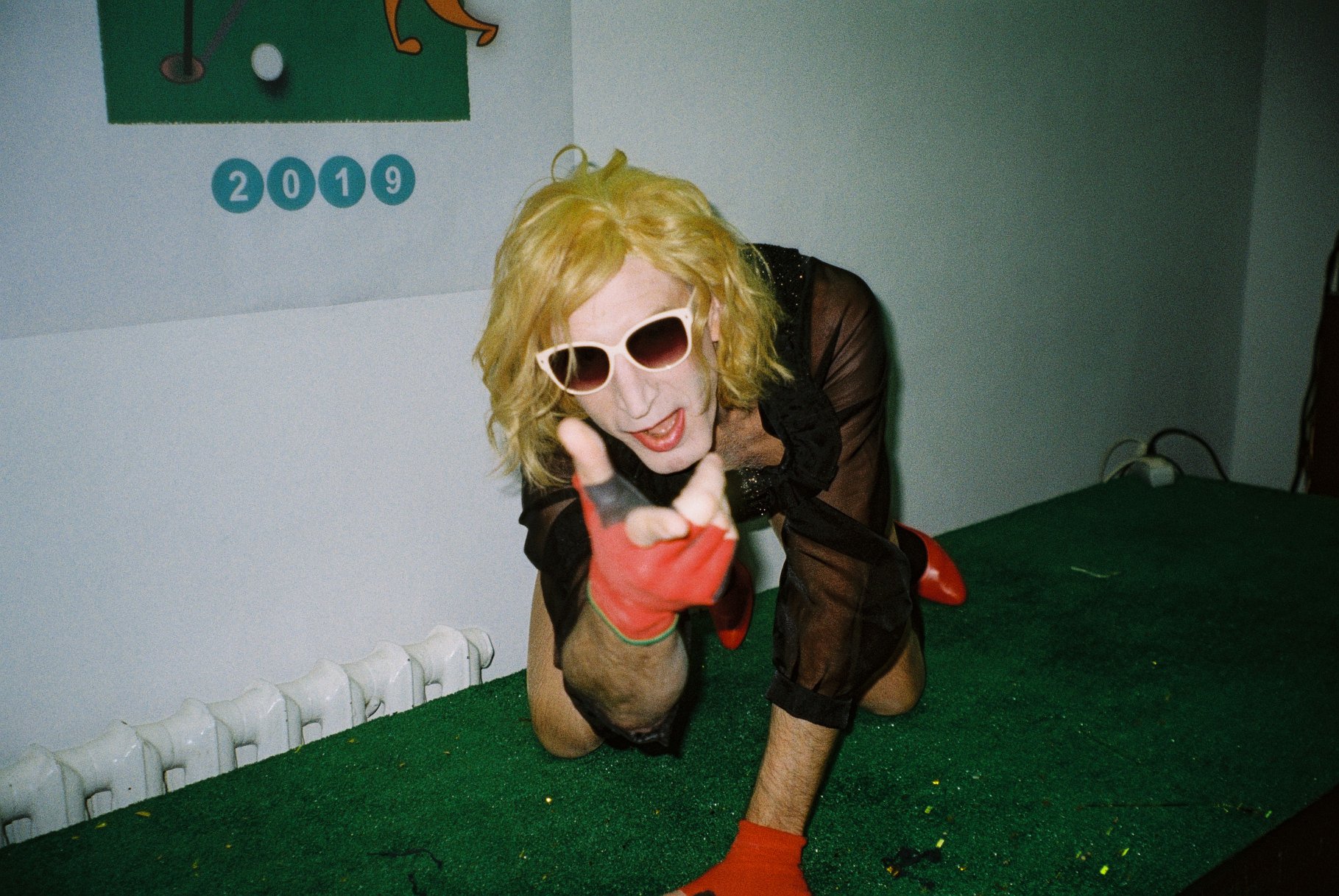
When I ask about the motivation for initiating 427, Kaspars tells me that it had a lot to do with a lack of spaces and action in Riga: “Even though there were the NOASS Art Centre and RIXC Center for New Media Culture, both artist-run organisations in my opinion, there wasn’t a proper artist-run space. We wanted a space of our own to work with artists we like and pursue international collaborations we were missing here.”
Turning nine in April, 427 Gallery has held around 60 exhibitions so far. “Over the years I’ve started to feel more responsibility towards the local art scene – both in terms of exhibiting more Latvian artists but also just keeping the gallery running,” concludes Kaspars and adds: “We even have a small art collection now, accumulated over the years thanks to artworks gifted to us.”
The Living Art Museum, or Nýló, as it is called in everyday speech, is a very different type of artist-run space. Established more than 40 years ago, it functions to this day as an artist-run museum with a collection, exhibition space, and multiple archives for researchers.
“Although the history of the space is unique, the context of reacting to a certain deficiency is shared with a lot of other artist-run spaces. Back in 1978, a group of local artists experiencing stagnation in the public art institutions decided to take matters into their own hands by founding a museum in order to collect contemporary art disregarded by the state institutions,” adds Sunna.
Being a museum, Nýló’s aim to this day is to preserve and exhibit contemporary art, and at the same time continuously filling in gaps as these are perceived by the Icelandic artist community. Sunna continues: “In terms of the history and the lifespan of Nýló, there have been tremendous changes. Even though the direction changes with every new board, assigned by the association of the museum, the core DNA of the museum is to react to certain needs – be it about representation, spaces, related to collecting, preserving or anything else that the future holds.”

Swallow is a project space in Vilnius initiated in 2020 by three curators Audrius Pocius, Edgaras Gerasimovičius and Vaida Stepanovaitė. Edgaras tells us that Swallow appeared from a very specific context: “It was about seizing an opportunity and it had a lot to do with the power shifts in the local and Baltic art scene. With the Contemporary Art Centre (CAC) in Vilnius closing for renovations, the MO Museum opening and RIBOCA also appearing, we understood it as a great time to open a new space.”
It wasn’t long until the Swallow team found their place at SODAS 2123 cultural centre and the trio was able to start planning their programme: “Looking back, the process was somewhat spontaneous, and everything started from the chaos we found ourselves in,” Edgaras ponders. Although the initial aim was to establish an exchange platform for local and international artists, the opening time coincided with the pandemic and Swallow had to recalibrate their plans. Edgaras explains: “The first exhibition was done together with artists who came back from abroad and it was a kind of a celebration of returning to Vilnius and being together during unusual times. In a way the pandemic changed our perspective, now we exhibit more local artists.”
Boiling point of the periphery
Off-spaces and artist-run spaces often pop up in derelict urban areas, where artists can gain access to spaces with cheap rent only temporarily and are thereby integrated into the process of gentrification. 427 has moved once and Kaspars tells us that it happened thanks to another artist-run publishing house-bookstore-bar Bolderāja: “At the time the area was still pretty crazy: outcast people, run down houses, nothing really happening here. Soon other art spaces and bars started opening here too. I guess you could say that we’re part of the slow gentrification process but thankfully it’s still affordable and the area is mostly characterised by students and cosy bars.”
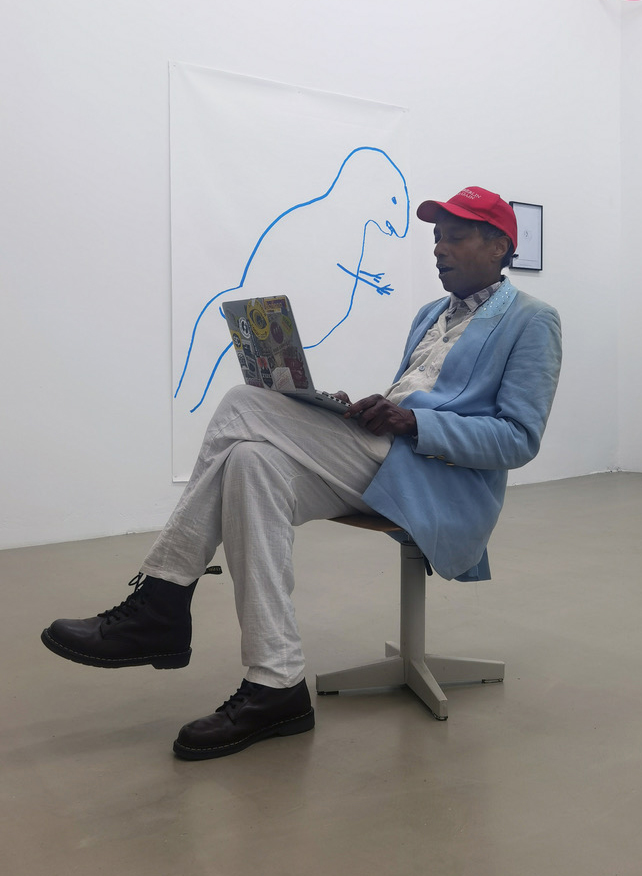
Swallow is located in the SODAS 2123 cultural complex, housed in an old boarding school, with artists’ studios, other art and event spaces, a community garden, a bar and much more. Edgaras thinks that the relationship to the physical context of Swallow is a love-hate relationship: “The good thing is that we have a lot of collegiality in the community here. We think a lot about the larger context of our role as friends and co-workers in the same field and how we relate to the future of the building and thus also the area.” Currently, SODAS has a contract with the municipality for 20 years, which gives them a lot of time to focus on day-to-day activities. Edgaras adds: “Most likely the community has to fight for our space after this, in order to not be part of the standard gentrification process of getting demolished right after we’ve served our part. At the same time sustaining the complex and the community is draining and that’s why some people have already left.”
The Living Art Museum, in addition to putting on shows and establishing archives, has more demands for the space they inhabit. Sunna tells us that they too have moved, around 6 or 7 times over the years, but since 2017 they have been located in an old herring factory, which was renovated as a cultural centre. In addition to Nýló, the factory houses another established artist-run space Kling & Bang Gallery, commercial gallery i8, Olafur Eliasson’s studio, and a restaurant. “It’s a good mix of artist-run spaces and other institutions. Having a long-term contract in a newly renovated building is also a privilege we haven’t had before,” says Sunna.
While the stories from Iceland may seem unusual to us in the Baltics, where we only see state and private institutions with the resources to establish and/or operate out of newly renovated art spaces, the fact that artist-run initiatives are offered such a privileged space really shows that the Icelandic art scene is a lot more artist-led.
Pinning down the alternative
Project spaces and artist-run initiatives are often described as an alternative to state and private art institutions. They might practise non-hierarchical modes of organisation, more often than not have a non-commercial approach to art production, and experiment in their programming, as well as giving a chance to early-career artists. I am interested in the local context of my interviewees and what the word alternative entails there. While exhibitions in project spaces don’t always look so different to what viewers may see in other galleries, the perceived difference may manifest in the mindset: “I think we want to be an alternative to the mindset of over-producing. We can’t and don’t need to produce everything like exhibitions with only new artworks, events, books, souvenirs etc. We don’t need to follow a schedule, we can plan our time more freely,” explains Edgaras. This year Swallow has had only two exhibitions, which means the freedom to take their time in a way most institutions cannot. At the same time, the principle of slow programming and focusing on other projects in addition to exhibitions is refreshing because sometimes following all the art events happening in the city can be exhausting.
While talking about museum programming, Kaspars notes that running a gallery is not always about being merely an alternative to something but it’s about building your own thing and through this, influencing other institutions too: “In Latvia it is sadly quite common that museums don’t pay fees to exhibiting artists and they have to find their own co-funding to get a pay cheque. We have always paid fees and I guess that can be considered an alternative here,” says Kaspars. At the time of our video call, 427 was not even functioning as a gallery but as a CBD shop as a means to make ends meet due to the lack of funding – another streetwise way of navigating the daily precariousness of running your own project space. “In addition, when I work with artists it’s a lot more personal than I believe can be achieved in an institution. I love being a host and showing people around. With our last exhibition by the Swedish artist Albin Looström, we spent a night drinking beer at the gallery and showing each other our local hip hop on Youtube,” exemplifies Kaspars. This level of intimacy is hard to imagine in communications with bigger institutions, and that highlights the tendency to prefer the process to the celebratory opening – real sparks of connection always fly before the six o’clock wine or craft beer with the curious audience.
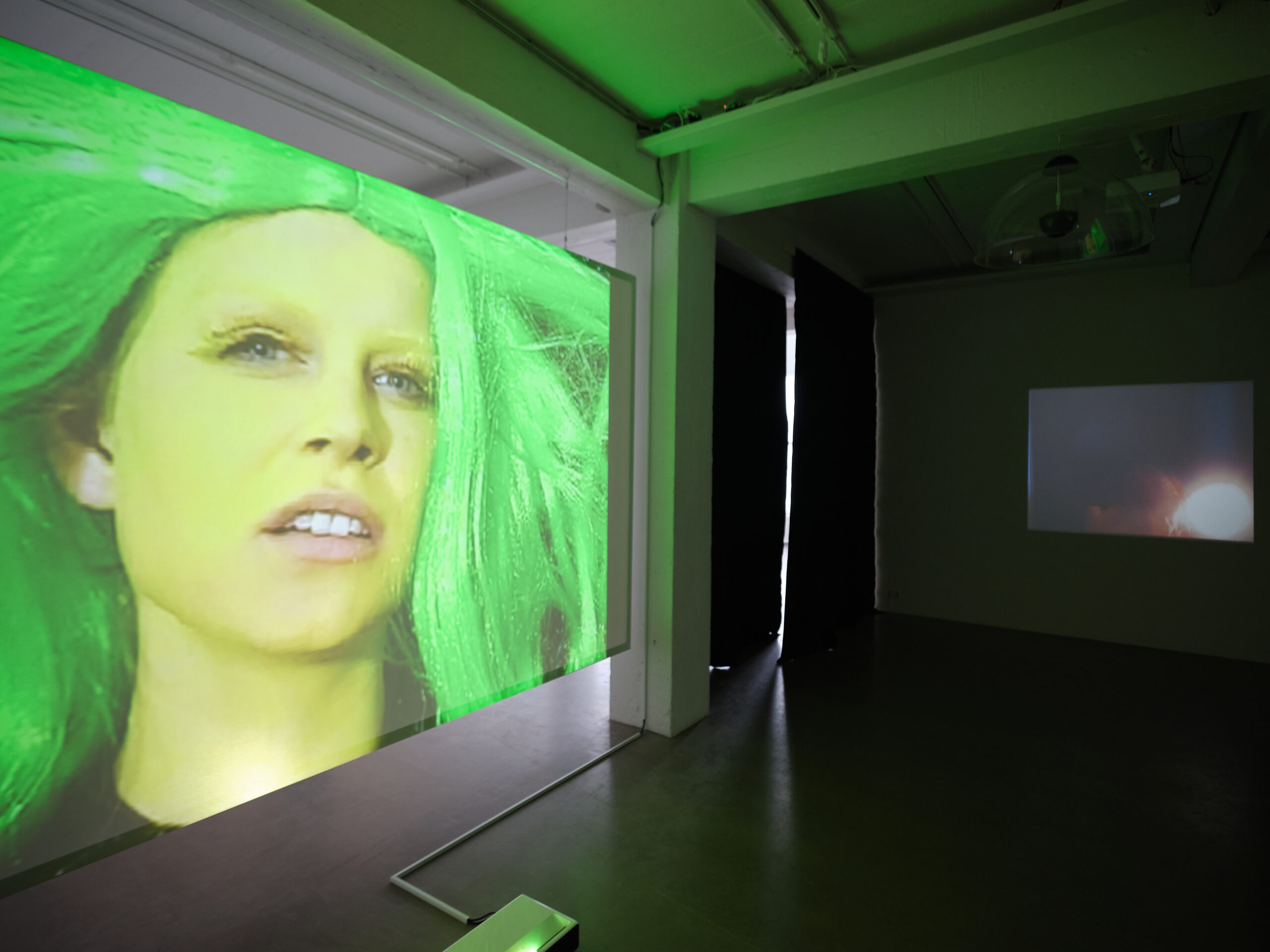

Sunna concludes our conversation by saying that the artist-run ideology affects every decision they have to take: “This influences who we choose to work with, how we do it, how we collect, work together as a team, divide administrational tasks etc. – the choices we make and the methods we use distinguish us from public institutions and commercial galleries.” Talking about valuing the process and the genuine human connection that has grown out of working together on something you believe in, while managing scarce resources with care and integrity may sound like a cliché, but the people who have run alternative project spaces can attest to this: “A lot of what goes on in artist-run spaces has to do with care and bravery. I know these words are loaded but taking bold choices and nurturing the collective is very important,” says Sunna.
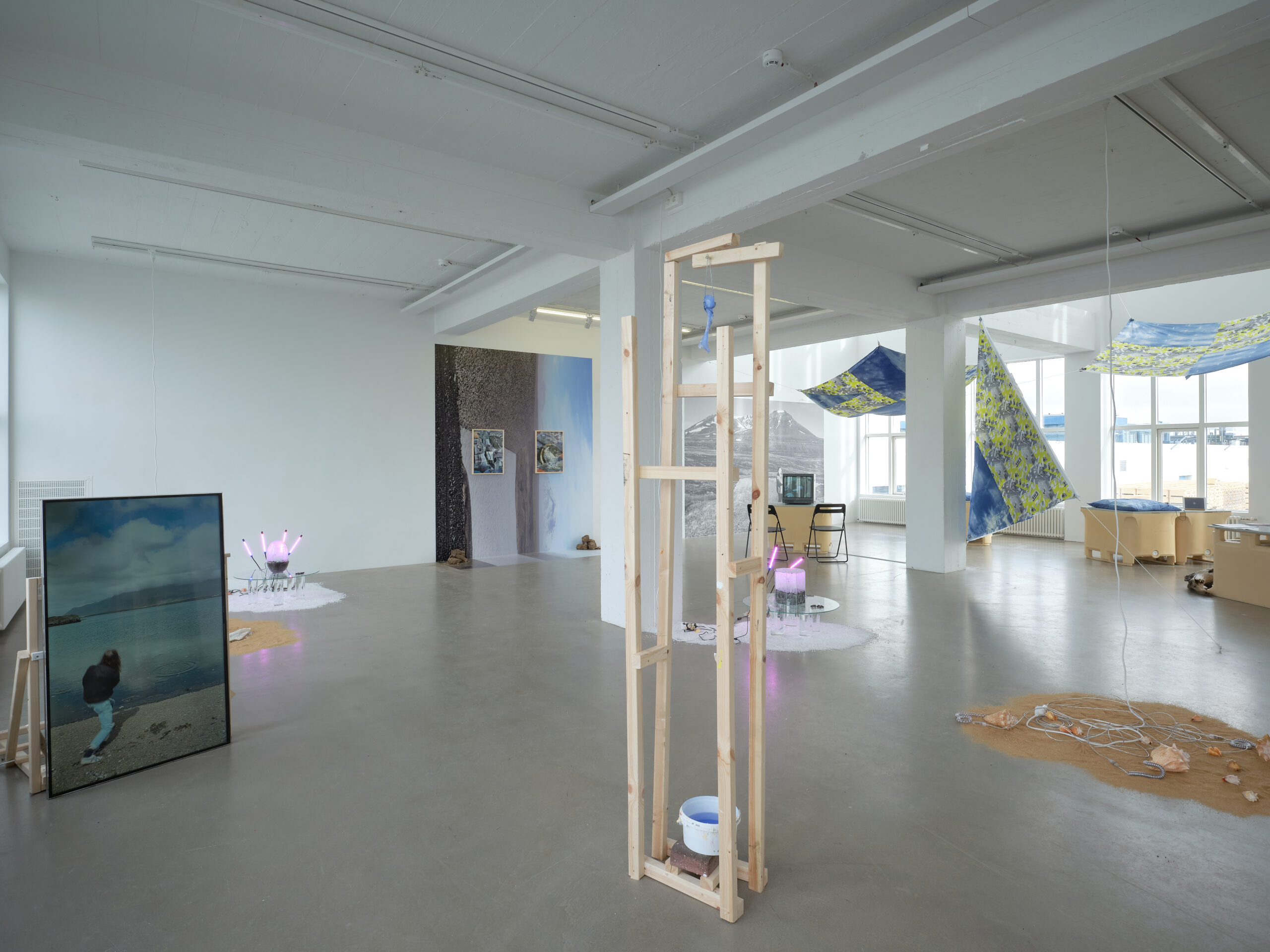
Trophy case of the self-initiated project space
While staying in opposition to the unequal power relations in the art world is one of the main aims of the self-initiated and artist-run scene, it is hard to sustain the alternative formats that also need time, money and labour to persist. The Living Art Museum is a good example of an artist-run organisation that at least for now seems to have hacked the premise of staying young forever that is expected from the alternative scene. Edgaras and Kaspars also hope to find the middle ground between institutionalising and fading away, suggesting that bequeathing the space or establishing it as a nomadic gallery might be realistic options at some point.
It is easy to get seduced by the alternative models these spaces practice, but another way of looking at the success of the alternative scene is by the lives it has touched. Taking a clear political stance and working with likeminded people is important. For example, just two weeks after Russia invaded Ukraine, 427 together with Low Gallery put together a fundraiser screening video works by Ukrainian artists and selling beer donated by Latvian breweries. Discussing similar efforts in Vilnius, Edgaras adds: “In addition to working with Ukrainian artists we lend our premises to NGOs that are working with people we can’t reach. Sharing our resources with people affected by difficult situations is a constant process.”


The day after we’d finished with the interviews and having said our goodbyes, I went out into muddy Tallinn to prepare for another opening at the Infinite Life Gallery located in a display case next to a tram stop. Thanks to the conversations with Sunna, Edgaras and Kaspars, and my own experience with co-running the aforementioned gallery – a modest alternative exhibition space in its second life phase that has operated in the limbo between oblivion and sudden reincarnation for years – I’ve come to the conclusion that while the everyday reality of running an off-space is often shadowed by the lack of money and relies on borrowed time, taking a toll on motivation and making quitting a desirable option, what makes independent and artist-run spaces special in this precarious situation, is that their solutions for managing difficulties bring new energy to the art field. Coming up with unorthodox approaches to managing scarce resources, easily shedding skin and acquiring a new shape and valuing the intimate process of working closely with other people, are just some of the characteristics that refuel the art field with potential for adopting the alternative ways of working we so often yearn for. While drinking hot wine on the street and laughing at stories of installing a show in horizontal rain, I felt a little tickle, affirming that although the self-initiated endeavours I’m a fan of are low-key and mostly go unnoticed, in the wider cultural field, they make sticking around worthwhile.